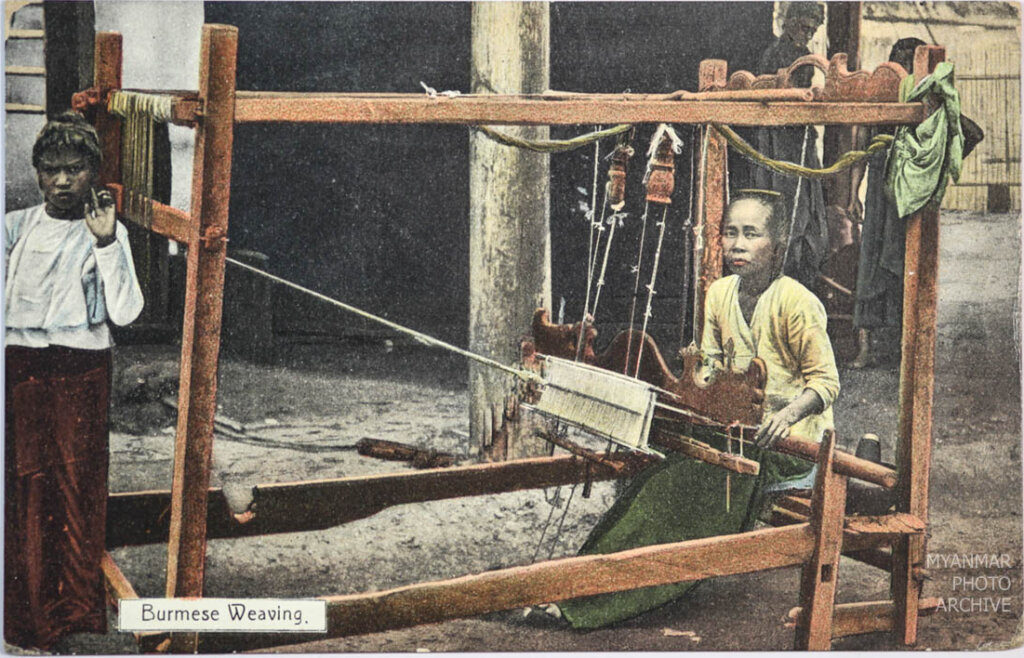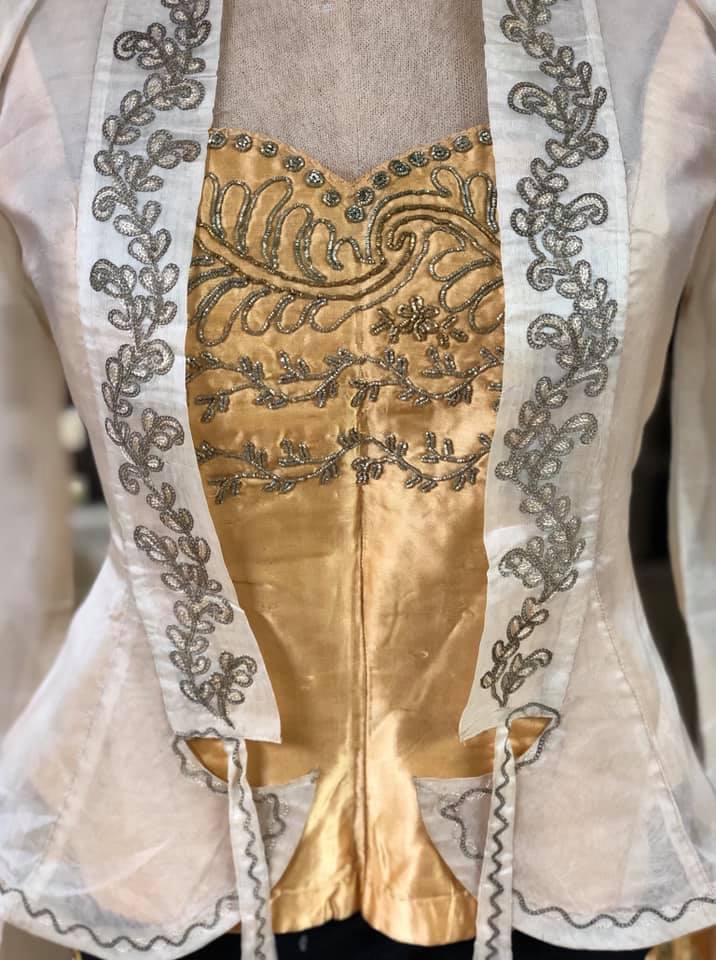Weaving
By Jonathan Lim
There’s a lot of history and culture that can be unpacked when you look at the cover of this old postcard. It was produced by D. A. Ahuja, a Punjabi photographer who was known for publishing many images that offered glimpse into what life may have been like during when Myanmar was a British colony.
There are four people in this picture. The first that catches your eye is probably the girl on the left. She’s standing next to a loom bigger than herself, at which a woman is stationed, working on a textile. In the upper right corner of the background, you can see two dark figures, and even further back, you can see what may be a hut or a straw fence. Finally, on the lower left, you can see a label that titles the postcard, “Burmese Weaving”.
Traditional weaving stands tall as the most popular handicraft in a country rife with artistic merit. Literatures date the weaving industry to have thrived as far back as the Bagan period in the 9thcentury, and it was in the 19thcentury, under British rule, that many textile factories were built. Over the decades the industry has gone through highs and lows, until present day in which better conditions and foreign trade and investment has helped it flourish once again.
Being made of many different ethnic cultures, it only makes sense that many of them would have their own versions of weaving. Some Shan textiles are made of silk from the lotus flower, which makes harvesting in itself a painstaking, demanding task. Chin textiles, often made of cotton, have history and culture woven into them. Not to say other cultures don’t, of course.
An overwhelming majority of these traditional weavers are women. These women learn the art from their mothers and grandmothers, and they in turn are likely to pass it down to their daughters.
Newlywed Chin women are expected to weave a blanket for their dowry. According to The Myanmar Times, “When one partner dies, the blanket is cut in two, with one half used to cover the body and the other half stored away until the second partner passes.”
They also weave family heirlooms to pass down towards newer generations; textiles and fabrics that were once worn during events that held familial importance.
In some subcultures, the patterns among a woven article of clothing may even be symbols of marital and social status within the village.
Although commercialization has allowed for the weaving industry itself to thrive again and grow rapidly, traditional weaving is not as fortunate. Most of the weavers that spearhead the output today are older women. Fewer youth opt to inherit the knowledge, even if in some homes it is “still the pride of the house to have a loom with a diligent daughter working at it”, according to Myanmar Insider.
Hope is not lost, however. A growing appreciation and demand from both local and international consumers have promised that traditional weaving will never truly die out. Even if some of the new generation of weavers today do not involve the contexts and customs of their ancestors, they are sure to impart into their work some of their own.
Citations:
https://www.mmtimes.com/lifestyle/5011-in-ethnic-textiles-history-is-woven.html
https://www.myanmarinsider.com/myanmar-silk-queen-of-textiles/

This postcards was produced by D.A. Ahuja one of the most important image makers in the history of Myanmar 
Jonathan is a freelance graphic designer who specializes in logos and brand identity, and a freelance writer currently working with Myanmar Photo Archive. His greatest achievement to date is being able to sit through five long, boring Transformers movies and still manage to be entertained.